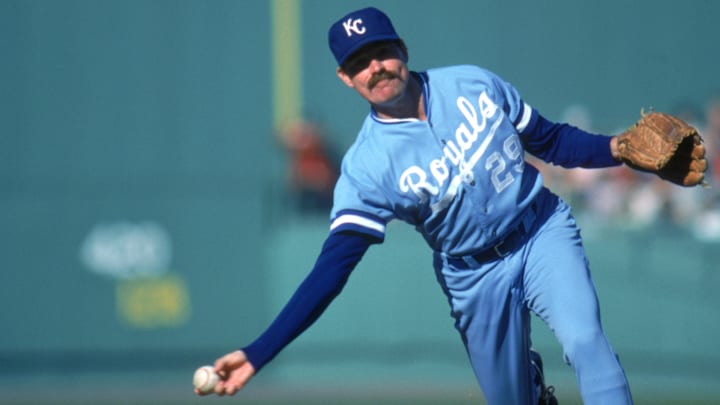The Royals didn't have to look Farr for to replace Quiz
After spending his first major league season in Cleveland, Steve Farr joined the Royals just in time to win a World Championship in 1985. He made 16 appearances during the Royals' run for the crown, including three spot starts, and recorded one save. More success would follow.
Farr recorded eight saves in 1986, and in 1987 matched Quisenberry in appearances. Ironically, it's hard to argue he pitched better than Quiz for a team that finished only two games behind the World Champion Twins — Quisenberry posted a 2.76 ERA and eight saves, while Farr had a 4.15 ERA and only a single save. But when Quisenberry struggled in the first half of the 1988 season, the Royals saw the writing on the wall.
Kansas City released Quisenberry just before the All-Star Game, and he was promptly snapped up by the team across the state, forcing Royals fans to witness the unsightly image of him in a St. Louis Cardinals uniform. For his part, Quisenberry bounced back with a solid 1989 season, but he was a far cry from his prime. He moved to San Francisco in 1990 but tore his rotator cuff after only a few appearances. He chose to retire and, sadly, died from brain cancer in 1998.
The Royals handed their important late-inning work when Quisnberry's pitching deteriorated, but he didn't keep it for long.
